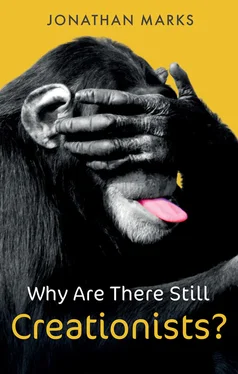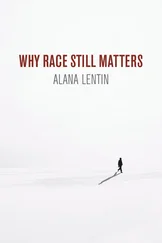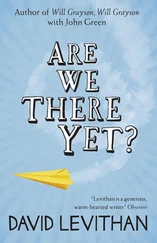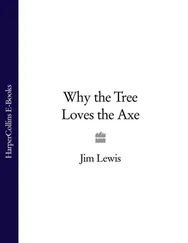Consequently, when scholars reject “ Australopithecus prometheus ” or “ Homo rudolfensis ” as unreal, what they mean is that the fossils allocated to them ought to be called something else. Making scientific sense of the ancestors is no small undertaking.
Neither is making unscientific sense of the ancestors. When evangelical entrepreneurs build Noah’s ark in Kentucky, they must still struggle to reconcile biogeography and adaptation, as did serious scholars two centuries before them. If God made animals to fit where they live – polar bears to the arctic, bison to the Great Plains, koalas to eucalyptus forests – then it seems unlikely that they could have gotten there from Mount Ararat before going extinct, without some other ad hoc miraculous intervention. The problem actually arises from juxtaposing two different ancient sources. The Bible talks about Noah’s ark, but not about adaptation; that is from Aristotle. Moreover, if God made birds to fly, then it is hard to explain ostriches and penguins. Those are the kinds of facts that led scholars 200 years ago to begin to seek explanations in history, rather than in miracle.
It doesn’t matter whether you call the animal-saver Noah, or Deucalion, or Utnapishtim – as the stories from various ancient sources had it – he still had an impossible job of dropping off the various animals in their respective habitats around the world. He must be tasked with dropping the lemurs off in Madagascar, anacondas in the Amazon, armadillos in America, gibbons in Southeast Asia, kangaroos in Australia, reindeer in northern Europe – or else another story needs to be composed and related about how they got there. And that story is necessarily non-biblical – because the Bible doesn’t say anything about it, which in turn undermines the assumption that the Bible is giving us a complete and accurate account of adaptation and biogeography. In fact it undermines the assumption that what the Bible says is even relevant to understanding the facts of prehistory. Early scientists 200 years ago recognized the problems here.
Fossils made the problems with Noah’s ark as a scientific explanation for the patterns of life even more acute. Some ancient animals seemed to cross-cut categories – large swimming and flying reptiles, for example – while others seemed to confuse familiar patterns. Elephants, after all, were only known to be from hot climates, so why were there woolly elephants in Siberia long ago? Certainly being woolly helps you survive in Siberia, but these were elephants, so what was their relationship to the normal elephants of Africa and South Asia? And what happened to them? Was God’s gift of woolliness somehow insufficient for them? And why didn’t the same thing happen to the non-woolly elephants of the tropics? The science of the early 1800s was discovering that the world of the past was a different place than the world of the present, and the Bible afforded no guide to understanding it.
Were there pteranodons and iguanodons in Eden? If not, then how did they get into the fossil record? And if so, then why doesn’t the Bible mention them? The Bible implies quite directly that Eden was populated by familiar creatures. As a character in The Sopranos articulated it many years later, “No way! T. rex in the Garden of Eden? Adam and Eve would be running all the time, scared shitless. But the Bible says it was paradise.” And clearly, if you imagined them as somehow uninterested in consuming Adam and Eve, those T. rexes would have had to be the world’s worst adapted herbivores, about as suited to vegetarianism as great white sharks.
It is no coincidence that biblical scholarship and biological scholarship matured together. The coevolution of information and explanation had been a long-term process. Scholars in ancient times had envisioned the relationship between God and His creation as analogous to that of a king and his subjects. He ruled by decree, and could reverse or abrogate his decisions more or less capriciously. For example, God devotes a chunk of space in Leviticus and Deuteronomy to explaining what foods are clean and unclean for His followers. But in Mark 7:19, Jesus peremptorily declares “all foods clean.” In practical terms, that certainly made it easier to be a Christian than a Jew, but it also reveals a God who seems not to be able to make up His mind.
Could the sea part for His followers and swallow up their enemies? Maybe. Could a man live for three days in the belly of a fish? Maybe. Could the sun stand still in the sky for twelve hours? Maybe. Can the dead be raised? Maybe.
By the eighteenth century, however, the image of God as a sort of cosmic despot was being gradually supplanted by the image of God as a sort of cosmic engineer, building stable things that work a certain way, always. The universe now was seen to run according to natural laws, which were inviolable by their very virtue of being divine, which in turn gave less leeway to suspend their operation, for that would plunge the universe into chaos, which was precisely what the Creation had transcended.
To a large extent, this was a consequence of the discoveries of physics and astronomy, which had shown convincingly that the earth moves, that it is a planet like others, that it revolves around the sun, and that it does so because of gravity, which is also what keeps the moon revolving around the earth and reciprocally causes the tides upon the earth. And just as laws keep the moon circling the earth and earth circling the sun, so too do laws keep blood circling through the body. Laws were there in physiology as well as in physics.
Laws are order. Violating them introduces disorder. The earth could not stop rotating for a day without sustaining catastrophic consequences resulting from inertia; and starting it up again would engender similarly daunting implications now predictable from the laws of physics.
Rationalism, the emerging ideology of the eighteenth century, was a powerful antagonist against miracles. It deployed an old medieval weapon in order to define miracles out of existence: If we can explain things without miracles, then why bother with them at all? As for the recollections of the ancients, which explanation is more likely – that there was a temporary suspension of the laws of nature, or that somebody, somewhere along the line, didn’t get the facts exactly straight in relating the story?
On this basis, an Enlightenment savant like Thomas Jefferson could start distinguishing the biblical things that Jesus probably did say and do from the biblical things that Jesus probably didn’t say and do. And by the 1840s, biblical scholars were using history and linguistics to reimagine the gospel story as non-miraculous – controversially at first, but ultimately with irresistible intellectual force. After all, French and Spanish could not have arisen miraculously at the foot of the Tower of Babel if they had been spun off from Vulgar Latin over the past 1,000 years or so.
But of course there was much more going on in European and American intellectual life than the demiraculizing of Scripture. Miracles were being written out of earth history as well, being supplanted by “uniformitarianism,” which held that modern geological processes are generally slow and gradual, and are the processes that are most appropriate to apply to try and understand the earth’s past. And when you performed that application, the earth seemed to be far older than the biblical “begats” could allow. The closer you looked at the composition and patterns of geological formations, the more it seemed as though the earth seemed to have “no vestige of a beginning.” 1The remains of ancient life embedded within the geological formations indicated primeval worlds inhabited by only remotely familiar forms of life. Indeed, the history of life was intimately bound up in the history of the earth itself.
Читать дальше












